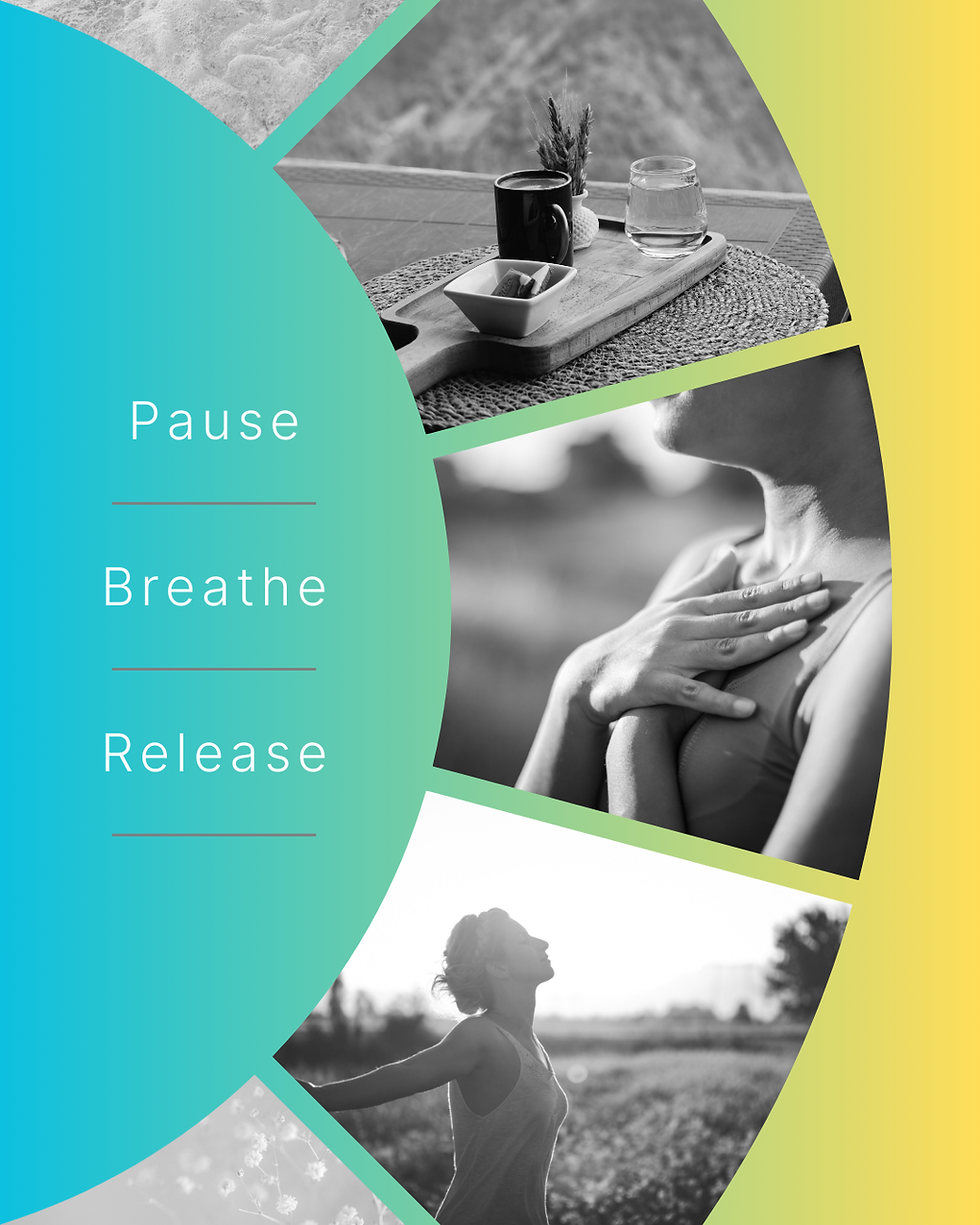WHY DYNAMIC BREATHING IS IMPORTANT FOR MANAGING STRESS
- Jennifer Heard
- Nov 10, 2021
- 3 min read
Dynamic breathing exercises make use of physical movement to create openings within the body in order to decrease resistance to deeper breathing. We stretch our bodies after physical activities because the stress from exercise causes our muscles to tighten. When the mind is under stress the muscles of our core tighten. This tightening prevents the ribcage from expanding appropriately causing the accessory muscles to take over breathing.
We get stuck in a loop. Stress caused a fight or flight response, tightening the muscles around our core in preparation for activity. This tightening causes us to breathe from the upper chest in shorter, more shallow inhales/exhales which keep us in a stress response. Once the perceived threat is over the body relaxes and returns to a normal 360 degree breathing pattern. However! When we are under chronic stress the muscles of the abdomen do not have a chance to relax and we stay in a “stress” breath.
Dynamic breathing exercises aim to release this tension allowing us to move back into our primal breath; giving the body and mind a break.
Unfortunately, the word “stress” has become a normal part of life. How many times a day do you utter this word? How often is the amount of stress experienced topic of conversation?
While stress does not directly cause death it is the leading cause of chronic health conditions that increase risk of early or sudden death. The WHO notes that heart attack is the leading cause of death in middle to high income countries and
“The world’s biggest killer is ischaemic heart disease, responsible for 16% of the world’s total deaths. Since 2000, the largest increase in deaths has been for this disease, rising by more than 2 million to 8.9 million deaths in 2019. Stroke and chronic obstructive pulmonary disease are the 2nd and 3rd leading causes of death, responsible for approximately 11% and 6% of total deaths respectively.”
who.int/news-room/fact-sheets/detail/the-top-10-causes-of-death
So, what does this have to do with breathing? Research indicates that chronic stress affects the way we breathe; changing the way we breathe changes our relationship with stress. We have automatic, physiological reactions to our mental processes. When stress is experienced, it signals our brains that a threat is present and sends the body into “fight or flight” mode, triggering the sympathetic nervous system, increasing heart rate, breath rate, and cortisol levels.
High cortisol levels caused by chronic stress increase blood cholesterol, triglycerides, blood sugar, and blood pressure which are all contributing factors to heart disease. When we do a google search for ways to reduce stress breathing is usually at the top of the list. This is great advice; but what if you are physically breathing incorrectly? Unfortunately, this is the reality.
Chronic stress has left us in a society where natural breathing is in the upper chest. Biology tells us that this is a stress breath designed for use during the “fight or flight” response. If you take a deep breath in the upper chest, you are not relaxing the body. Instead, you are signaling to your brain that something is wrong, and it encourages sympathetic nervous response; not the calming action of the parasympathetic system we are hoping for.
The answer to this dilemma lies in activating the diaphragm to encourage our primal “happy” or relaxed breath. Deep abdominal breathing is the key to activating the parasympathetic nervous system.
Dynamic breathing exercises are designed to stimulate the diaphragm; strengthening our primary breathing muscles so that we can make use of our instinctual calming breath.
Basic Dynamic Breathing Exercise
1. Sitting up tall, forward in your seat with ears inline with your shoulders and feet in-line with the hips practice moving the tailbone under and out behind while holding the chest, shoulders and head relatively steady. This is a gentle rolling of the hips forward and back.
2. Take a deep inhale and as you exhale roll the pelvis forward, tailbone tucks under, pulling belly button to spine, sucking the gut in as much as possible.
3. As you inhale come up to the starting posture, allowing the belly to fully expand over the thighs.
4. To deepen your inhale you can add a lower back spinal arch by sticking your tailbone out behind and exaggerating the protrusion of the belly over your thighs. Be careful not to stick the chest out.
5. The back-and-forth movement should originate at the hips, by tucking and untucking your tailbone/pelvis.
6. The slower you do this movement the deeper the breath is.
7. Practice this breath 1- 3 times per day, 5-15 cycles each time, until you are able to complete 5-10 minutes without light-headedness and with a steady breathing pattern.
If you want to learn more about dynamic breathing check out my course Change Your Breath, Change Your Life.



Comments